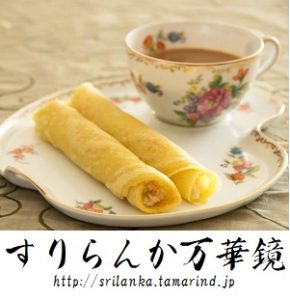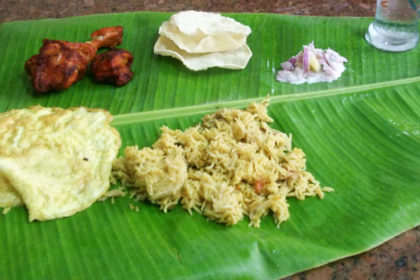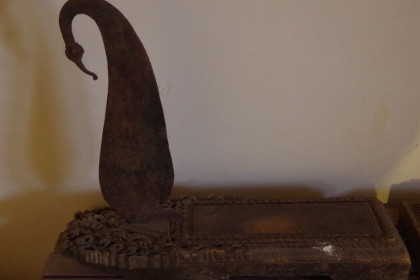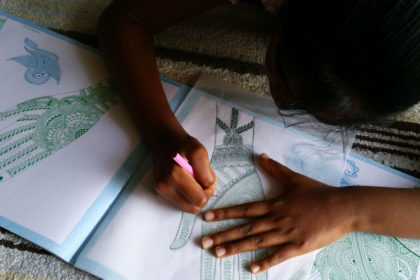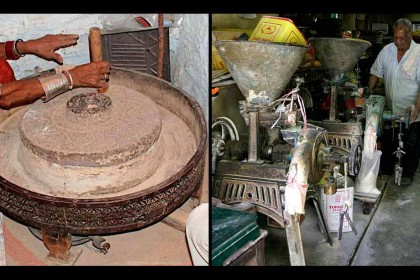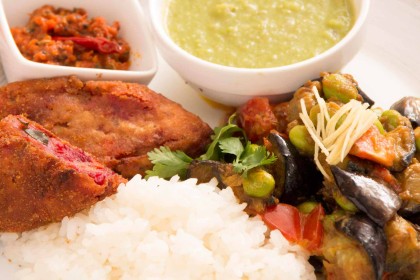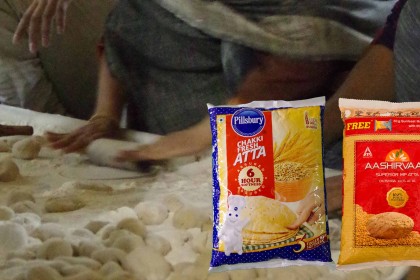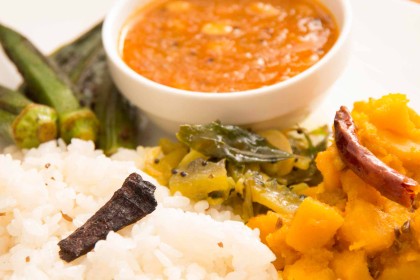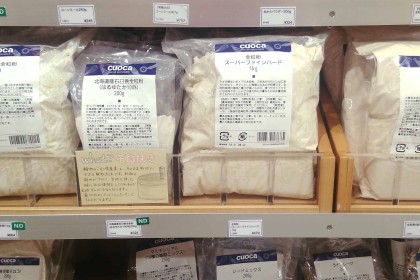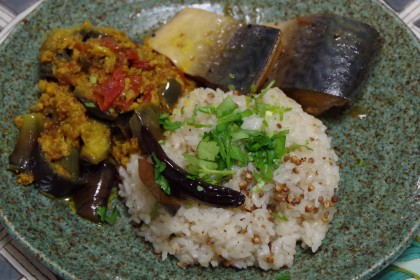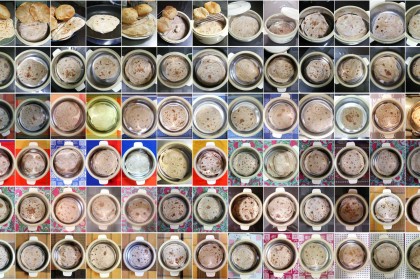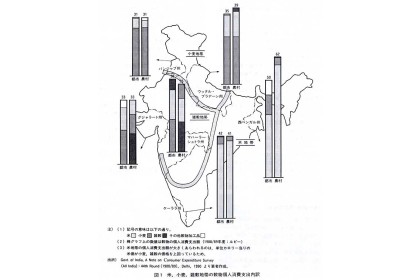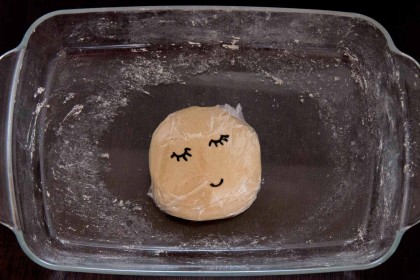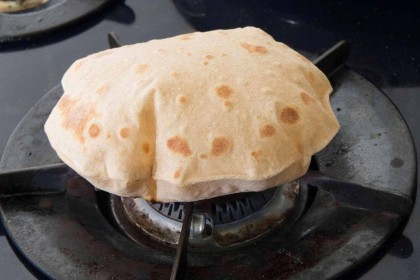Fermenting Dosa Batter in Winter Tokyo
It snowed in Tokyo this week. Talking about fermentation, now is the best time to make “miso” (soy bean paste) indispensable to Japanese daily meals. By fermenting boiled beans very slowly in this cold weather, you will get a richer taste. Click here if you are interested in miso making process.
On the contrary, this must be the worst season for dosa batter making. Dosa is a crape like food shown in the photo above. I folded it in half and put some spicy potatoes inside. It is one of the staple meals in the southern part of India made from rice and beans, soaked, ground, fermented over night and roasted with some oil. It requires some extra efforts to ferment its batter properly in this much cooler weather of Tokyo.
If the batter is not fully fermented, it has a bad taste of raw beans. It also seems to turn too fragile and become very difficult to keep in shape when cooking on a pan.
This cookbook on South Indian cuisine written in Japanese advices to use the “keep warm” function of a rice cooker or electric stove to ferment dosa batter. Unfortunately I could not keep the proper temperature with the utilities I have at home and ended up warming the batter up to 50°C (122°F). It obviously was too hot for it to ferment properly. (But this book itself is definitely worth owning! Full of great recipes with step-by-step photos, detailed instructions and interesting essays on Indian food culture.)
I heard some Japanese people put the batter in a plastic bag and keep it in a bath tub with a lid filled with warm water. An Indian friend of mine living in Tokyo told me that she was once so desperate with the poor fermentation and even tried adding a very small amount of dry yeast to the batter.

At the Indian cooking school I am working for, we ferment the batter in a portable machine like this. You can set any temperature between 5 to 60°C (41 to 140°F), so it works both as a warm keeper and refrigerator.
Yes, it’s such a struggle to satisfy our cravings for dosa if you live in Tokyo… except for the hottest month of the year!
But… NO DOSA, NO LIFE!!
Maybe I am oversimplifying 😉 but the staple food of India is wheat in the North and rice in the South. Dosa is one of the various ways to eat rice in the southern region. They also make steamed bread called idli from the similar batter. For every meal, people chose what they eat with: boiled rice, dosa, idli, rice noodles or others… according to their tastes, mood and family tradition.
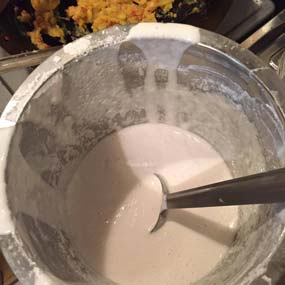 Whenever I visited my South Indian friends in Tokyo, I found them keeping the dosa batter like this in the fridge enough for a few days.
Whenever I visited my South Indian friends in Tokyo, I found them keeping the dosa batter like this in the fridge enough for a few days.
For meals or snack, they reached for this pot and quickly made some tasty dosa for me. I thought it was so cool and wanted to do the same!!
Thus, in spite of this cold weather, I have started my dosa-life…
So far, I have found this electric carpet I had at home quite useful in fermenting my dosa batter.

To warm the batter evenly, I put it in a wide bottom stainless pot. Then I wrap the pot and carpet together with a wool stall.
I put a towel under the pot so that the batter won’t get too heated. After 6 hours, it was about 40°C (104°F). Isn’t this quite close to the summer temperature?
Rice-beans ratio, batter thickness, roasting technique, accompaniments, etc….
Bit by bit, day by day, my spare-time experiments with dosa batter is going on.
Actually, dosa was the food that drove me to learn Indian cooking.
Maybe I will write about it some other time…
P.S.: The photos of the book and electric appliances are linked to the online shops. Click them if you are interested! 🙂


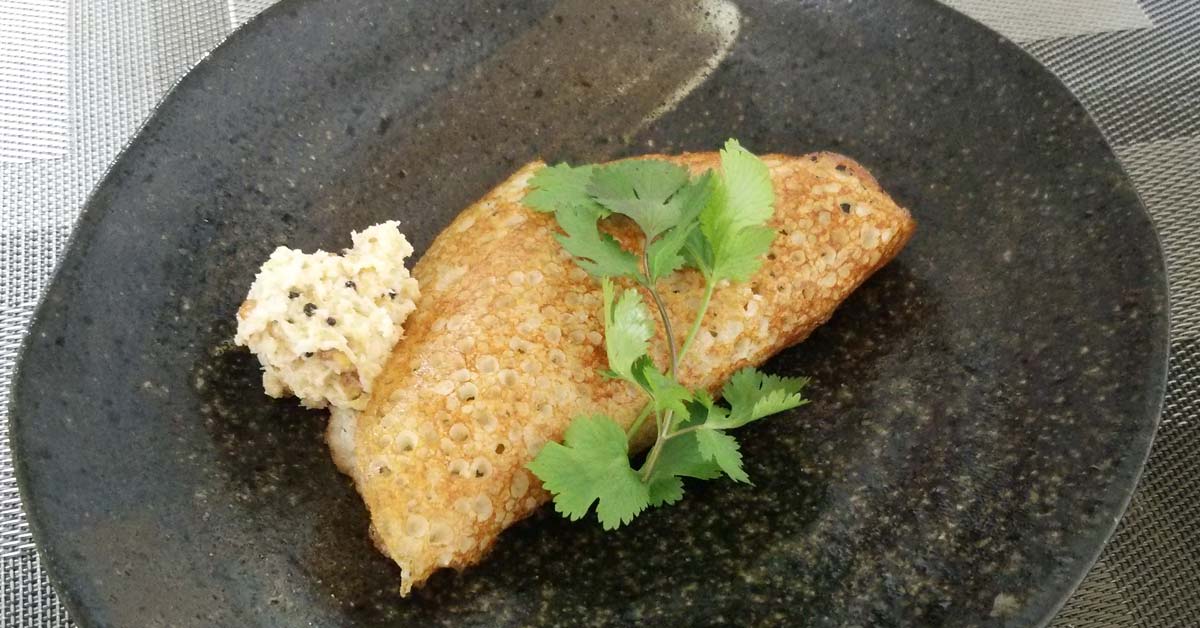

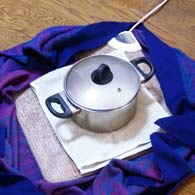
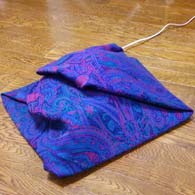
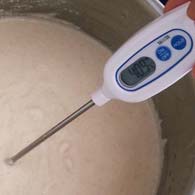



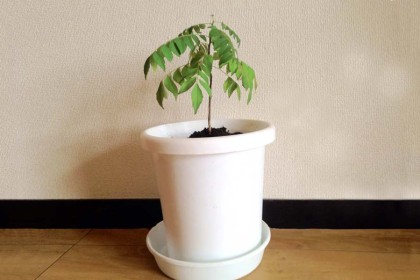
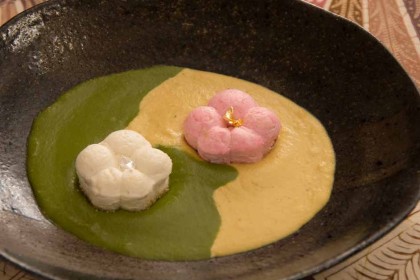
![[商品価格に関しましては、リンクが作成された時点と現時点で情報が変更されている場合がございます。] [商品価格に関しましては、リンクが作成された時点と現時点で情報が変更されている場合がございます。]](https://hbb.afl.rakuten.co.jp/hgb/15e5dfb3.565a34f5.15e5dfb4.2342c3df/?me_id=1274992&item_id=10000247&m=https%3A%2F%2Fthumbnail.image.rakuten.co.jp%2F%400_mall%2Fsabroso%2Fcabinet%2Ffratelli_wine%2Ff_wine_a.jpg%3F_ex%3D80x80&pc=https%3A%2F%2Fthumbnail.image.rakuten.co.jp%2F%400_mall%2Fsabroso%2Fcabinet%2Ffratelli_wine%2Ff_wine_a.jpg%3F_ex%3D300x300&s=300x300&t=picttext)

